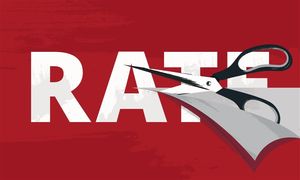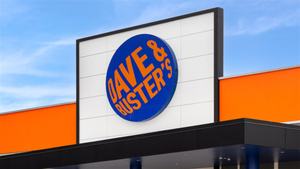With state rules becoming more stringent and online platforms promising a middle ground between predatory lending and financial exclusion, the payday loan sector is getting ready to experience its most significant disruption to date.
Last month, a Phoenix nurse named Sarah Martinez faced a $800 bill to repair her transmission. In the past five years, she would have gone to one of the payday loan outlets that were located in close proximity to her hospital.

However, a few years later, most of these lending locations were vacant due to Arizona's lending restrictions. On the other hand, she turned to her smartphone, where she discovered digital lending marketplaces such as LendingTree, PersonalLoans, and BestUSAPayday's eLoanWarehouse. These marketplaces promised instant cash without the 400% annual percentage rate that had previously defined the business.
Martinez's experience embodies an earthshaking transformation in emergency lending in America. According to the latest trends reflected in data from the Consumer Financial Protection Bureau (CFPB), traditional payday loan volume decreased 23% from 2022 to 2024, but transactions appearing through online lending marketplaces saw a 67% rise. This reshaping is not only pushing citizens of the USA to borrow from different places — it actually is changing the whole object of borrowing: who can lend, what price to charge, and what conditions to impose.
The Payday Loan Reckoning
There were about 12 million American payday loan users in 2019. According to the Pew Charitable Trusts, that number dropped to 7.8 million in 2024. In 2020 there were 23,000 payday lending storefronts nationwide; today, there are less than 14,000 left in operation.
Dr. Mehrsa Baradaran, a banking law professor at UC Irvine adds, "What we are seeing is a carefully orchestrated demolition of an entire industry." Reports from around the country show that, "States are not only regulating payday loans, they are enacting laws to make them non-existent."
Currently, 18 states and Washington D.C. have rendered payday lending illegal through interest rate limits (typically called APR caps) of 36% or less. Seven other states imposed such tight regulations that Advance America and Check Into Cash closed. Rate restrictions in Ohio and Virginia cut lender earnings by 80%.
Texas, Wisconsin, and Missouri, the remaining profitable states of the sector, are fighting to reform the industry, while Illinois voters have voted a 36% rate cap in November 2024.
Digital Disruption: The Marketplace Model Emerges
In direct response, digital marketplaces scramble to fill the gap created by brick-and-mortar lenders' withdrawal. Instead of directly lending money, such platforms help borrowers find networks of lenders, and as competition ensues, rates should theoretically be driven down.
LendingPoint, Avant, and BestUSAPayday are competitors in the installment lending space and the entire banking process.
This model seems to appeal to borrowers for obvious and better reasons — longer repayment terms (6-12 months instead of two weeks), larger amounts, and the ability to compare offers at once.
Jonathan Reed, Founder & CEO at BestUSAPayday said: "We are not changing the short term lending business, we're civilizing it. In situations when borrowers are able to compare five different offers rather than taking the first one they come across, market forces naturally enhance conditions."
Marketplace loans still routinely have APRs over 100%, and the algorithms that determine loan offers are largely opaque. But privacy proponents warn of another consequence, in that applicants' financial details are transmitted to dozens of prospective lenders.
The Compliance Complexity Crisis
For lenders, crossing state lines became a compliance nightmare. All states have unique rate caps, fees, licensing, and collection procedures. California allows interest rates on loans under $2,500 to reach as high as 460% annually; next-door Oregon limits it to 36%. This patchwork requires online lenders to geographically restrict access to funds or invest millions in compliance.
Newer court rulings have undermined these shields by ordering tribal lenders to play by the rules of their state. According to the National Native American Finance Association, tribal lending volume fell by 31% in 2024, costing thousands of jobs in economically depressed reservation communities.
Banking's Cautious Return
Traditional banks are again interested in small-dollar financing. U.S. Bank, Wells Fargo, and Bank of America now provide short-term loans with APRs of 70-88%, which is high by conventional standards but transformational compared to payday loans. They were created in response to regulatory pressure and the fact that millions of Americans require emergency credit products.
Through the Payday Alternative Loan program, the National Credit Union Administration purchased $2.3 billion in small-dollar loans in 2024, a 45% increase from 2022.
Banks accept just 23% of small-dollar loan requests, while payday loans see approval rates topping 80%. Providing high-risk borrowers with profitable services without engaging in predatory methods is a recurrent difficulty that is highlighted by this gap.
Dr. Lisa Servon, author of "The Unbanking of America," said payday loan bans get celebrated as though poverty had been solved. Lending alternatives may have dried up, but the demand remains. Only alternate financial panics conceal or reveal it.
A new study from the Federal Reserve Bank of New York backs up this worry. Research from the New York Fed reinforces this concern. In states that banned payday lending, overdraft fees rose 12% and Chapter 7 bankruptcy filings rose 8%. Online searches for "loan shark" and "quick cash illegal" quadrupled in limited states.
Tomorrow's Emergency Lending Landscape
The 2025 payday loan sector is far from its shabby past, but some basic issues are still unanswered. Can marketplace models provide truly cost-effective credit to riskier borrowers? Most importantly, what do millions of Americans do when their last option of receiving a loan disappears?
As technology and regulation continues to transform the payday loan market, the need amongst millions of Americans struggling to live paycheck to paycheck is ever present. The defining question of American consumer finance is whether this transformation ends up protecting vulnerable borrowers or accurately pushing them out of formal credit markets. The answer will determine the financial future of the lowest-income citizens in our society.
Disclaimer: This press release may contain forward-looking statements. Forward-looking statements describe future expectations, plans, results, or strategies (including product offerings, regulatory plans and business plans) and may change without notice. You are cautioned that such statements are subject to a multitude of risks and uncertainties that could cause future circumstances, events, or results to differ materially from those projected in the forward-looking statements, including the risks that actual results may differ materially from those projected in the forward-looking statements.
Media Contact
Company Name: Bestusapayday
Contact Person: Mike Hassy
Email: Send Email
City: New York
Country: United States
Website: https://bestusapayday.com/






